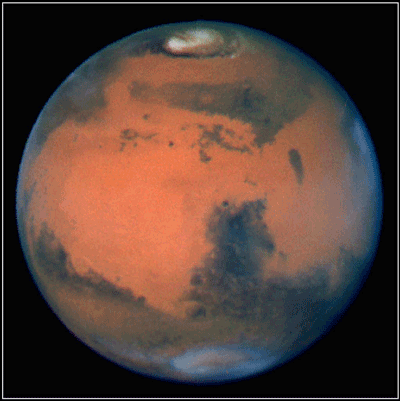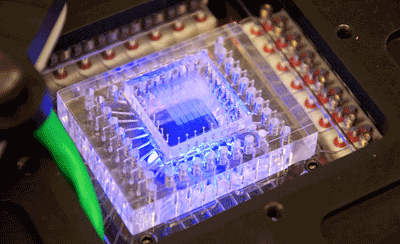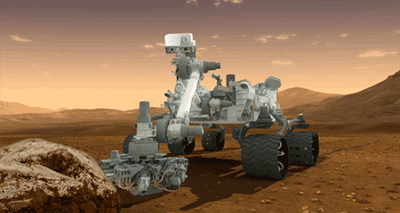The day is nearing when we can say that scientists are creating Martians.
John Craig Venter, researcher and entrepreneur, is working to develop a machine that can sequence DNA found on Mars and then “beam” it back to earth. Venter’s goal is to send a “biological teleporter” to Mars, collect Martian DNA, and then recreate Martian life from it.

He hopes to include the device that would consist of a sending and receiving unit on a future Mars rover mission, once improvements have been made on future rovers, including drills that can dig deeply to collect soil samples. Venter looks optimistically toward the subsurface life-form possibilities that Mars holds. On Earth, life forms can be found as far as 2 miles below the surface.
“There will be DNA life forms,” Venter said confidently at the Wired Health Conference in New York last week.
Once they are able to isolate the DNA found in the soil, they will be able to sequence it immediately. To beam the Martian life form back to earth could take only 4.3 minutes when Earth and Mars are at their closest.
Venter acknowledges human fears about such advanced technology. Since people are worried about the possible results of such life recreation, the Martians could be built in a P-4 space suit lab, instead of them landing here in a spaceship as sci-fi movies would have us thinking.
In order to rebuild a Martian, researchers would just resynthesize the genome and boot it up. (Sounds simple enough, right?)

A microfluidic device developed at MIT designed to automatically run DNA experiments on other planets. (Image via Christopher Carr, MIT)
Venter is well known for being the first to sequence the human genome and creating the first cell with a synthetic genome. Now he is working to create a universal recipient cell that will be able to read any DNA code injected into it.
“Once you can get the DNA, all life is within the realm of possibility,” said Venter.
Venter isn’t the only one with a curiosity for creating Martians.
Jonathon Rothberg is another scientific innovator and owner of Ion Torrent, a DNA sequencing company. He is currently working on a task similar to Venter. The company is working on a “Personal Genome Machine” that Rothberg hopes will also make it on a Mars mission. Rothberg and collaborators from MIT and Harvard are working to shrink their current model of the machine from about 66 lbs to just 6 lbs in order to meet the requirements of a NASA rover.
Because of a sequencing machine’s high sensitivity levels, it is more effective to send the sequencing machines to Mars instead of just returning the soil samples. That way there will be no contamination to ruin any experiments.
Although NASA won’t be sending another rover to the red planet until at least 2018, scientists are working diligently to get ready for their chance to create a Martian.

Artistic image of rover on Mars.(Image via NASA)
The only way for this to work is if life actually exists on Mars. Back in 1976, two space probes, Vikings 1 and 2, were sent to Mars to determine whether life existed there. With them, they brought three experiments to help make this determination. The Labeled Release apparatus brought on the mission worked by scooping up Martian soil and mixing it with water containing nutrients and radioactive carbon atoms. If the soil contained microbes, the life forms would release gases as a result of metabolizing. That Labeled Release test did, in fact, support the theory that there was life on mars, but the other two tests did not.
Now NASA has the Curiosity Rover that landed on Mars on August 5, 2012, collecting and testing on the red planet in search of life forms. Recently, Curiosity came across what is said to have possibly been an ancient riverbed, granting hope to optimists in search of life on Mars.
Life on Mars has been the hope for many years. In 1877, scientist Giovanni Schiaparelli produced a map of Mars as he predicted it to be. His map showed systems of manmade canals and channels, supporting the idea that life on Mars was a conceivable notion even back then. ■
Advertisement
Learn more about Electronic Products Magazine





